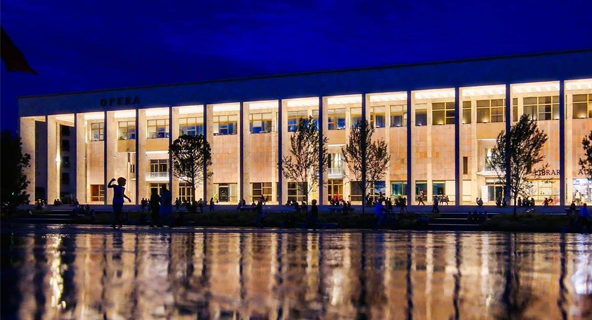26 APRIL – 21:20
RTSH 1 HD
Soon #online on Facebook, YouTube and www.tkob.gov.al
For the new generation of instrumentalists, Elvin Hoxha Ganiyev is undoubtedly the most virtuoso violinist of world stages. #NTOB brings him to the Albanian opera stage in an extraordinary recital concert for our loyal audience. Together with the Italian pianist Jacopo Giovannini, he brings the most representative pieces of George Enescu, Franz Waxman and Edvard Grieg.
Soloist: Elvin Hoxha Ganiyev
Piano: Jacopo Giovannini
Program:
George Enescu – Violin Sonata No. 2 in F Minor, Op. 6
Edvard Grieg – Violin Sonata No. 3 in C minor, Op. 45
Georges Bizet / Franz Waxman – “Carmen Fantasy” for violin & piano
About the work:
George Enescu (1881 – 1955)
George Enescu occupies an important position in the history of Romanian art because in his activity as a composer he took care to increase the musical heritage of his country, using and re-mastering folk songs, especially the so-called doine melodies that reflect the spirit of the Romanian shepherd and peasant and that were spread by the lahutari, i.e. by the gypsies playing in the city festivals. Thanks to him, Romanian music has seen new horizons open and received an international resonance, so much so that the government of Bucharest, to honor the musician’s memory, established the Enescu Museum in 1958 and an international festival named after him.
It is true that the reference to the folklore and folk heritage of Romania is a constant in Enescu’s music, especially in his symphonic and choral pieces, but we must not forget the very lively neoclassical component of this author, who has always given great importance to the melodic and counterpoint element in a stylistic context of measured diatonism. This can be seen in the three Sonatas for violin and piano, op. 2 of 1897, op. 6 of 1899, and op. 25 of 1926; an air of loving academicism, which does not lack a new melodic creation combined with virtuosity with a pleasant rhythmic cut, emanates in them.
Edvard Grieg (1843 – 1907)
Although with an essentially German background, Edvard Grieg left behind a rather small and episodic instrumental creation of chamber music: three sonatas for violin, one sonata for cello and two quartets for bows; of which, the second remained unfinished. A fact that may surprise us if we do not take into account the conscious concern with which Grieg, master of miniature and melodic invention, felt in some cases inadequate in handling and elaborating processes assumed by classical forms. In the second half of the 1870s, Grieg felt the need to update and deepen his composing technique.
The Third Sonata for Violin and Piano Op. 45, was written about ten years later, between 1886 and 1887, and it was first performed on December 10, 1887 at the Neues Gewandhaus in Leipzig, by Adolf Brodsky on violin and the author on piano.
Op. 45 is rightfully the most famous sonata of Grieg’s three sonatas for violin and piano. Compared to his previous works, it shows the extraordinary freshness of melodic invention, the refinement of harmonious language, the main role of the theme, the constant reference of Scandinavian folk music as an inexhaustible source of inspiration, while confirming the strengths of the composition, which is best coordinated and developed in the constructive and formal context of the genre. The feeling of tragedy and drama, the stimulation of passion and melancholy, contribute decisively to the definition of his expressive register in this work.
Franz Waxman (1906 –1967)
Carmen Fantasie is a work for violin and orchestra, or piano. The work is written by Franz Waxman for the 1946 film Humoresque for which he received an Academy Award nomination for Best Music.
The work, based on various themes from Georges Bizet’s opera Carmen, was originally intended to be performed by Jascha Heifetz. However, he was replaced by a young violinist, Isaac Stern, for the recording of the film. After seeing the film, Heifetz asked Waxman to expand the work because he wanted to play it on the radio program The Bell Telephone, where it premiered on September 9, 1946. The work has since been played by many virtuoso violinists.


